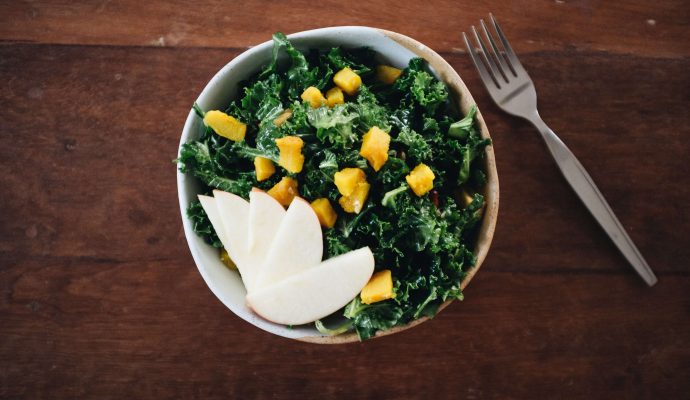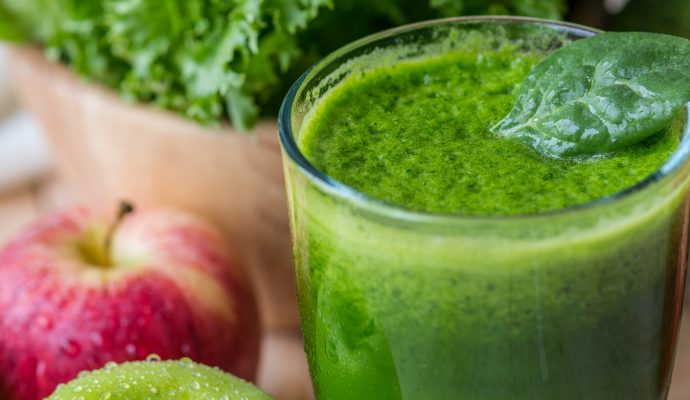As we get older, one of the things that can start to happen is that we experience aches and pains. If your aches and pains are a regular feature of your life, it’s definitely worth asking your doctor or physio for advice. Sometimes that regular twinge you are getting is something more serious, but don’t let the possibility of ‘something more serious’ prevent you from getting it checked out. If it’s nothing but creaking joints, that’s great. If it’s something else, well we can work on that too.
You may have guessed that the ‘something else’ I am thinking about is arthritis. I want to share some of my top tips for using food to help alleviate some of the symptoms of arthritis.
Types of Arthritis
There are 2 types of arthritis: osteoarthritis and rheumatoid arthritis.

Osteoarthritis occurs when cartilage between bones and joints wears down, allowing bones to rub together rather than giving them the protection and cushion they need. Cartilage is made up of collagen and other substances that make connective tissue both flexible and strong. Cartilage covers the ends of bones where they meet the joints — and deterioration over time can affect the shape and functionality of the joints, making it painful and difficult to carry out everyday tasks.
Under the age of 45, it’s more common in men, and over the age of 45, it’s more common in women. By the time they get to 50, 80% of people will have symptoms associated with this type of arthritis, which starts as a stiffness in the hips, back, knees or other joints. The joints then become increasingly swollen and inflexible.
Rheumatoid Arthritis is a chronic autoimmune disease that affects someone’s joints and causes ongoing pain, swelling, stiffness and limitations in terms of movements. For most people, their rheumatoid arthritis symptoms tend to flare up at times and become worse when inflammation levels rise, but then become better for a while, only to return once again. It can be triggered by genetics, or a bacterial or viral component, and also environmental or lifestyle factors. About 80% of sufferers are women. The body – for whatever the reason – develops antibodies against its own tissue, and it attacks the cartilage and connective tissue. Over time, joints become inflamed and enlarged.
There are a number of factors that are important in managing arthritis:
- How good your digestion and detoxification are
- Blood sugar balance
- Inflammation
- Levels of essential fats
- Allergies
Underlying Causes
The key to improving the symptoms of arthritis is to work on the underlying causes rather than just treating the symptoms.
Digestion
The scene for inflammation – even if that inflammation is elsewhere in the body, e.g. the joints – is often set in the digestive tract. If the gut environment is disturbed (a disruption in the normal balance of bacteria), this can lead to bacterial infection, parasites, intestinal permeability (aka ‘leaky gut’), allergies and intolerances.
What then happens partially digested food proteins get into the bloodstream, along with other toxins and microbes, putting greater pressure on the body’s detoxification processes. Once the liver starts to become over-taxed, any dietary or environmental toxins may cause further inflammation.
A programme that works on creating a good gut environment is ideal. Probiotics and prebiotics can be very helpful.
Blood Sugar Balance
There is a big link between inflammation and how well your body responds to insulin, the hormone produced in the pancreas to help control blood sugar levels. If your body has a reduced sensitivity to insulin, for example due to long-term poor dietary/lifestyle habits or you are diabetic, this can lead to high levels of sugar and/or insulin in the blood. Too much of either is toxic and can trigger inflammatory reactions.
Learning to balance your blood sugar levels plays a key role in managing the symptoms of arthritis. This is achieved through eating adequate amounts of protein at every meal and snack, increasing the amount of non-starchy vegetables, and considering the quality and the quantity of the starchy carbohydrates you eat.
All of my work with clients looks at balancing blood sugar, which focusses on eating real foods (not weird things you can only buy at health food shops), keeps you feeling full, and helps you manage your cravings.
Inflammation
In pretty much every circumstance, joint problems are linked to inflammation and sometimes also to problems with the immune system (autoimmunity).
The body produces chemical agents in the body to either switch on or reduce inflammation.
Prostaglandins are one of the main chemicals in this process, and these are the easiest to manipulate with diet. There are 3 different types. Types 1 and 3 are anti-inflammatory and type 2 is pro-inflammatory (causes inflammation and promotes pain).
Omega-6 fats can convert into either type 1 or type 2 prostaglandins. Eating a diet high in omega-6 polyunsaturated animal fats (found in processed food, ready-made meals, meat and dairy produce – particularly non-organic) has the body producing more of these less desirable type 2 prostaglandins. Reducing animal proteins and dairy products can bring symptomatic relief.
Omega-3 fats on the other hand, can only go down the route towards the anti-inflammatory type 3 prostaglandin. Omega-3 polyunsaturated fats are found in foods like walnuts, flaxseeds, hemp, chia seeds, and oily fish. Monounsaturated fats, e.g. avocados and olive oil, are also anti-inflammatory but work differently and are not involved in these specific pathways.
High levels of sugar and insulin can also direct the conversion of omega-6 fats down the type 2 pro-inflammatory pathway.
There’s another group of chemicals called ‘free radicals’. These are highly reactive oxygen molecules that “steal” electrons (a negatively charged particle that orbits the nucleus in an atom of matter) from neighbouring molecules to stabilise themselves. You might have heard of free radicals in skincare commercials. They are linked to accelerated ageing, cancer and other diseases. What helps keep these unstable molecules in check are antioxidants (again, something often talked about in skincare).
Antioxidants are found in large amounts in brightly coloured fruit and vegetables. The different colours tend to indicate the type of antioxidants produced – all are good. What we know about antioxidants is that they have a synergistic effect – eating a variety of different ones (by eating a large range of different coloured fruit and veg) has a greater effect that eating the same volume of the same type of fruit or veg.
Bottom line? Eat a LOT of vegetables and a moderate portion of low sugar fruits like berries (which have some of the highest antioxidant levels of all fruit).
If you have rheumatoid arthritis, talk to me about whether a more restrictive diet would work for you. This further cuts out all grains, nightshade foods (like potatoes, peppers, tomatoes, and aubergines) and other foods thought to play a role in causing an inflammatory environment.
Levels of Essential Fats
Omega 3 fatty acids (found in oily fish, seeds like flax, pumpkin and chia, and walnuts) are important to include daily because of their anti-inflammatory properties, which are well-documented.
Allergies
Many people with inflammatory conditions have allergies or intolerances, some of which may be due to leaky gut, where food proteins are able to get through the gut lining, triggering an inflammatory immune response. Common offenders are dairy products, yeast, wheat and gluten, other grains, eggs, beef, chilli, coffee and peanuts. If you experience arthritis – or in fact any other inflammatory condition, there may be mileage in having a food intolerance test. Ask me for details.
Food Action Plan
Remove Gluten and Dairy products
Reduce Animal protein
Increase non-starchy vegetables of all kinds (eat a rainbow of colours),vegetable protein such as pulses, oily fish, nuts, seeds, olive oil
Increase specific foods: celery, chilli, garlic, ginger, pineapple, red peppers, shiitake mushrooms, sweet potato, turmeric
Supplements– there are also numerous supplements which have been researched and can help reduce inflammation, including fish oil, curcumin, proteolytic enzymes, Boswellia. Ask me for details as it’s best to take them under supervision.
Stay Active
Low-impact exercise which doesn’t overly stress sensitive joints, including cycling, walking, water aerobics and yoga is beneficial for strengthening the muscles around the affected joint. this provides added support and reduces strain. Exercise has been shown to help lower inflammation and can even help prevent unnecessary replacement surgeries.





 Fruit and veg is good for you. No one would argue with that.
Fruit and veg is good for you. No one would argue with that.